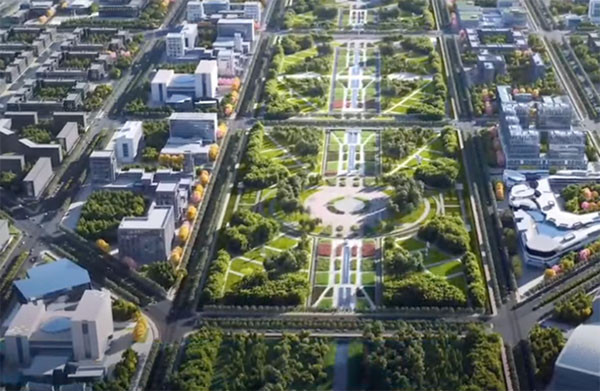
Design code for "New Tashkent" developed by creators of Skolkovo and the Garden Ring
Design code for "New Tashkent" developed by creators of Skolkovo and the Garden Ring
Tashkent, Uzbekistan (UzDaily.com) — Russian architects, renowned for their work on Moscow’s large-scale urban improvement program “My Street,” have played a key role in creating the design code for Uzbekistan’s capital.
The development of the "Atlas of New Tashkent", a reference guide outlining modern urban planning principles, involved Moscow-based designers, recognized as some of the most experienced specialists in the field.
Bakhtiyor Rakhmankulov, the hokim of Tashkent’s Yashnabad district, highlighted the importance of this collaboration, emphasizing that Moscow has undertaken extensive work to enhance urban safety and comfort while effectively integrating modern information technologies. He noted that involving Russian specialists in Tashkent’s development was a natural extension of the warm and reliable relations between Uzbekistan and Russia.
The project’s director, Aleksandra Sytnikova, CEO of the consulting bureau Atlas, recalled that Moscow became a leader in urban beautification across the post-Soviet space largely thanks to the "My Street" program, introduced in 2014. Under this initiative, the improvement of streets and public squares followed a comprehensive "façade-to-façade" approach, creating a cohesive and harmonious urban environment with modern technologies, materials, and design solutions.
Given the success of this method, Tashkent’s city administration entrusted the same specialists with the development of urban planning standards. Aleksandra Sytnikova is well known for her projects, which include the Skolkovo Innovation Center, the Olympic infrastructure in Sochi, master plans for urban agglomerations in Dagestan, the Bitsevsky Forest nature and historical park, and the Setun River Valley reserve, as well as public space enhancement projects in 47 Russian cities that hosted the 2018 FIFA World Cup.
During the Russian delegation’s visit to Tashkent, they presented innovative and, at times, experimental solutions, which, despite their boldness, are always focused on comfort and ergonomics. In some cases, their implementation required new mechanisms for interaction between government agencies, which enabled the successful realization of many ambitious ideas, Sytnikova emphasized.
As part of their work for Tashkent, Atlas has developed a comprehensive flagship project for the city’s design code, covering building regulations, façade design, public space landscaping, and requirements for materials and color schemes, taking into account the region’s climatic conditions. This document will serve as a foundational guideline for contractors shaping the new look of the city. Sytnikova also noted that the newly developed standards will be beneficial not only for new districts but also for Tashkent’s historic center.